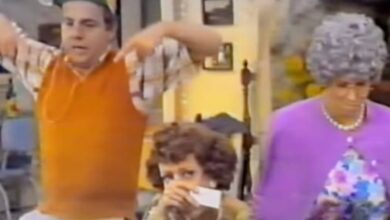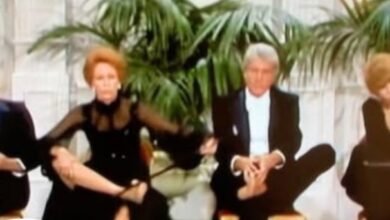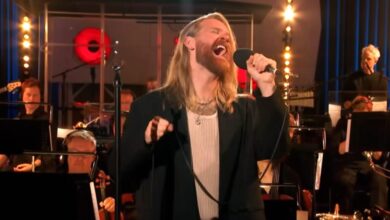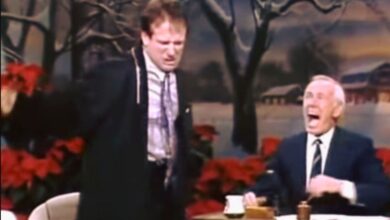Peter, Paul and Mary’s ‘Where Have All the Flowers Gone’ Crystallizes a Generation’s Conscience in 1962
When Peter, Paul and Mary released their rendition of “Where Have All the Flowers Gone” in 1962, the folk trio wasn’t just reviving a protest song—they were crystallizing the conscience of a generation. Originally written by Pete Seeger, the song took on new life in their hands, entering the Billboard charts during a turbulent political climate and becoming a quiet yet forceful anthem of reflection during the early 1960s. With its circular structure and haunting simplicity, it captured the aching questions of a society inching toward conflict, while remaining one of the few protest songs to achieve both commercial success and cultural longevity.
Peter, Paul and Mary—made up of Peter Yarrow, Paul Stookey, and Mary Travers—were a Greenwich Village-born trio formed in 1961 under the guidance of manager Albert Grossman. Though they emerged during the folk revival alongside acts like Joan Baez and Bob Dylan, their sound was more polished and harmonic, aimed at bridging traditional folk storytelling with accessible, radio-friendly structure. Their vocal blend was distinct: Travers’s rich, crystalline voice layered seamlessly with the textured warmth of Yarrow and Stookey. Their approach brought protest music from smoky coffeehouses to suburban living rooms.
“Where Have All the Flowers Gone” was penned by folk legend Pete Seeger in 1955, inspired by a passage in a Russian novel quoting a Ukrainian folk song. Initially composed with just three verses, Seeger added two more later, transforming the piece into a full-circle lamentation of the cycles of war and loss. It was Joe Hickerson, another folk revivalist, who helped shape the final version. When Peter, Paul and Mary adopted the song, they were drawn not only to its message but to its timeless melodic arc—its ability to whisper haunting truths rather than shout them.
The recording, featured on their debut album Peter, Paul and Mary, was produced by Warner Bros. with Milt Okun overseeing vocal arrangements. Okun emphasized the trio’s natural harmonic chemistry while keeping the instrumentation sparse—just acoustic guitar and upright bass, allowing the lyrics to lead. Mary’s voice carried the weight of each question with heartbreaking clarity, while the trio’s unified vocals during the refrain evoked the image of a community asking the same impossible question in one voice.
Upon release, the song didn’t immediately storm the charts as a conventional pop single might have, but it quietly climbed, reaching listeners through word-of-mouth and live performances. It peaked on the Billboard Hot 100 and, more notably, solidified the trio’s reputation as musical conscience-bearers. By early 1963, it was a staple on college campuses and in protest circles, even gaining international attention in Europe, where anti-war sentiment was similarly growing.
What made “Where Have All the Flowers Gone” resonate so deeply was its capacity to humanize political issues. Unlike more direct protest songs, it posed rhetorical questions, asking listeners to reflect rather than react. In a pre-Vietnam America grappling with Cold War anxieties, nuclear proliferation, and the shadow of Korea, the song felt like a sobering meditation. It didn’t shout blame—it simply asked: why?
The success of the song helped cement Peter, Paul and Mary as voices of the social movement. Their influence quickly expanded—they became fixtures at civil rights rallies, anti-war demonstrations, and on television specials advocating for justice and peace. Their presence at the 1963 March on Washington further linked their music to the era’s most transformative moments. Without “Where Have All the Flowers Gone,” that positioning may have taken longer to solidify.
The song also had a profound impact on other musicians. Its success demonstrated that serious, reflective songs could reach commercial audiences without sacrificing meaning. Bob Dylan, then an up-and-coming songwriter, would later cite the trio as instrumental in popularizing socially conscious music. Their success made room for songs like “Blowin’ in the Wind” and “The Times They Are A-Changin’” to flourish in the mainstream.
Over the years, “Where Have All the Flowers Gone” has been covered by dozens of artists, each bringing a new timbre to its solemn message. Notably, Marlene Dietrich performed it in multiple languages, turning it into a European anthem of mourning and remembrance. Country artists, punk bands, and orchestras have all offered interpretations, proving the song’s message transcends genre and era.
At the time of the song’s rise, the trio themselves were navigating newfound fame while holding fast to their values. Mary Travers in particular became a symbol of principled artistry—refusing to conform to industry expectations and often speaking out against the very institutions that profited from her music. The release of this track helped propel her voice into the public sphere, not just musically but politically.
In the decades since its release, “Where Have All the Flowers Gone” remains one of the most enduring protest songs of the 20th century. It is frequently used in documentaries, war memorials, and peace marches, and continues to find new relevance with each passing conflict. The song’s circular lyrics mirror the repetitive nature of history—a reminder that the same questions will be asked again and again.
The recording also had technical significance. Its minimalist production style became a blueprint for later folk recordings, emphasizing emotion over complexity. It influenced how protest music would be arranged in the years to follow—direct, stripped down, and personal.
Though none of the trio are still recording together today, and Mary Travers passed away in 2009, the song lives on in countless tribute concerts, remastered releases, and curriculum playlists. It has been inducted into multiple halls of fame and is cited in musicology texts as a pivotal piece of 1960s folk activism.
Ultimately, “Where Have All the Flowers Gone” endures not because it demanded action, but because it demanded reflection. It invited listeners to look inward, to grieve, and to consider their place in the cycle of war and peace. In a time of division, it offered unity through sorrow. And in doing so, it helped shape the direction not only of Peter, Paul and Mary’s career—but of protest music itself.





